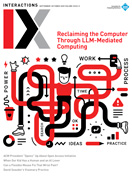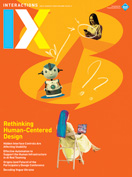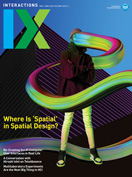Authors: Md Zia Uddin
Posted: Wed, October 01, 2025 - 3:43:00
In recent years, we have come to expect that digital technologies will solve some of our most persistent societal challenges. But when it comes to supporting the independence of older adults and individuals with disabilities, trust in intelligent systems is not a given—it must be earned. In the context of assisted living, this trust begins at the intersection of multimodal sensing, artificial intelligence, synthetic data, and explainable AI (XAI).
Smart assisted homes now rely on a fusion of data from wearable devices, environmental sensors, and audio‑visual inputs to detect critical events, such as falls, medication‑adherence lapses, and changes in routine behavior. Unlike conventional tech deployments, however, these systems operate within highly personal, private spaces. Without strong safeguards, such systems risk crossing ethical boundaries or simply being rejected by those they intend to help.
Figure 1 presents a schematic layout of a smart assisted living apartment equipped with a comprehensive network of multimodal sensors and intelligent systems designed to support independent living for older adults or individuals with disabilities. The setup integrates various types of sensors, including pressure sensors embedded in furniture (e.g., chairs, beds, and sofas) to monitor presence, posture, and activity levels. Environmental sensors measure air quality, temperature, and lighting conditions, while presence detectors and magnetic switches provide contextual awareness by detecting motion and object interaction, such as door openings or appliance usage. Water-flow sensors in the bathroom fixtures monitor usage patterns to detect anomalies such as overuse or lack of use, which may indicate potential health issues. Additionally, the living space includes audio inputs and ultra-wideband (UWB) sensors for non-contact monitoring of respiratory activity and sleep patterns. Data from these sensors is initially processed through an onsite edge gateway device, represented by a Raspberry Pi, which handles real-time analytics locally. This reduces communication delays and enhances data privacy by ensuring that sensitive raw data does not leave the home unnecessarily. Processed summaries and alerts are securely transmitted to a private cloud infrastructure, which supports advanced machine learning algorithms for long-term data analysis, anomaly detection, and adaptive decision-making. The system features a closed-loop design where insights generated in the cloud are relayed back to the home environment to trigger alerts or interventions. Resident interaction with the system is enabled through multiple user-friendly interfaces, including a smartphone-based conversational AI agent, wall-mounted tablets, and mobile applications. These interfaces facilitate personalized control, real-time feedback, and greater transparency, empowering residents to manage their environment with confidence and autonomy. Overall, the figure illustrates how a thoughtfully integrated ecosystem of sensing, local processing, cloud analytics, and human-centered interfaces can create a trustworthy and effective smart home environment for assisted living.

Figure 1. Schematic layout of an intelligent assisted living.
This is not merely a technical problem. It is a trust problem as well. As these technologies become more embedded in daily life, users, caregivers, and regulators must be confident that their operations are transparent, respectful, and fair. Developers must prioritize local data processing, encrypted communication, and user consent to preserve the integrity of private data streams. Processing data locally via edge‑computing platforms keeps sensitive information inside the home, offloading less to cloud servers and minimizing the risk of exposure [1].
Equally important is ensuring that models are robust and fair. This is where synthetic data emerges as a powerful ally. Collecting real‑world data to train AI systems often raises privacy concerns and may not capture rare events, such as a fall at 3 a.m. in a dim hallway. Synthetic datasets can fill these gaps by simulating realistic but non‑identifiable events, enhancing model performance while protecting privacy [2]. Researchers have applied generative approaches to simulate diverse conditions that real users may encounter, from mobility decline to medication non‑adherence.
Yet synthetic data, by itself, cannot solve every challenge. To prevent overly simplistic or biased AI behaviors, it must be complemented with carefully anonymized real‑world data. Bias remains a critical concern in AI for health and assisted living. If models are trained only on a subset of the population, they may make faulty inferences for others. Algorithmic fairness must therefore be explicitly tested and monitored—particularly in applications that affect vulnerable populations [3].
The final piece of the puzzle is explainability. Smart systems that raise alerts or make predictions must also explain why. Whether the AI recommends a health check‑up or triggers a fall alert, users and caregivers need to understand the logic. Explainable AI tools such as LIME and SHAP help by offering insights into which features contributed most to a decision—motion patterns, inactivity, or biometric signals [4].
Explainability is not just a technical requirement but a human‑centered necessity. Older adults are more likely to adopt assistive systems when they understand them. XAI enhances transparency and allows developers to spot and correct biases. Moreover, as regulatory pressures grow—especially in Europe and North America—XAI will play an essential role in compliance and auditability [5].
Perhaps most importantly, the push for trustworthy AI is part of a broader shift in how we think about care. Smart assisted homes are not meant to replace human connection, but to support it. As researchers caution, if AI systems generate too many false positives or act without transparency, they risk being sidelined by caregivers and users alike [6]. But when implemented well, they offer more than safety; they offer dignity, autonomy, and peace of mind.
The future of independent living will not be built by AI alone. It will be shaped by how well we integrate ethical design, user feedback, and collaborative governance. From data privacy to model explainability, each step must reflect a commitment to empowering users rather than surveilling them. In that sense, trustworthy AI is not just a tool. It is a standard—one that will define how we care for each other in the digital age.
Endnotes
1. Yu, K., Li, Q., Chen, D., and Hu, L. . Safeguarding user‑centric privacy in smart homes. ACM Transactions on Internet Technology 24, 4 (2024), Article 23, 1–33.
2. Carrara, F., Pasco, L., Gennaro, C., and Falchi, F. Learning to detect fallen people in virtual worlds. Proc. of the 19th International Conference on Content‑Based Multimedia Indexing. ACM, 2022, 126–130.
3. Poulain, R., Bin Tarek, M.F., and Beheshti, R. Improving fairness in AI models on electronic health records: The case for federated learning methods. Proc. of the 2023 ACM Conference on Fairness, Accountability, and Transparency. ACM, 2023, 1599–1608.
4. Sun, Q., Akman, A., and Schuller, B.W. Explainable artificial intelligence for medical applications: A review. ACM Transactions on Computing for Healthcare 6, 2 (2025), Article 23, 1–31.
5. D. Das, Y. Nishimura, R. P. Vivek, N. Takeda, S. T. Fish, T. Ploetz, and S. Chernova. 2023. Explainable Activity Recognition for Smart Home Systems. ACM Transactions on Interactive Intelligent Systems 13, 2 (2023), Article 25, 1–39.
6. C. Caldeira, N. Nurain, A. A. Heintzman, H. Molchan, K. Caine, G. Demiris, B. Reeder, and K. Connelly. 2023. “How Do I Compare to the Other People?” Older Adults’ Perspectives on Personal Smart Home Data for Self‑Management. Proceedings of the ACM on Human‑Computer Interaction 7, CSCW2 (2023), 1–32.
Posted in: on Wed, October 01, 2025 - 3:43:00
Md Zia Uddin
View All Md Zia Uddin's Posts






Post Comment
@Moto X3M (2025 10 03)
Hi, I’m first here! I’m going to seed my favorite game Moto X3M here, hope you all enjoy it, thanks a lot!
@GPTJP.net (2025 10 06)
This article offers a clear, structured overview of how multimodal sensing and AI intersect in assisted living. It effectively highlights privacy, trust, and real-time processing. For deeper insights or drafting similar analyses, I recommend exploring the latest free チャットGPT model at GPTJP.net, which excels in analytical writing.
@happy (2025 10 06)
Thanks, this was really useful for me! playloltcg
@Peter (2025 10 06)
The integration of AI in assisted living, as highlighted, brings both opportunities and challenges. Margin Calculator considerations are crucial when balancing technological advancement with ethical responsibilities. Ensuring transparency and user empowerment is essential for the successful adoption of these systems.
@Anna (2025 10 06)
Exploring AI’s role in assisted living is fascinating. Like monitoring cycles with period tracker apps, ensuring ethical, transparent AI in elder care builds trust and improves lives. The focus on user empowerment is key.
@James (2025 10 06)
This article highlights the critical need for trustworthy AI in assisted living. A romance writing prompt generator could even be adapted to create scenarios for synthetic data generation, ensuring ethical and unbiased AI training. The focus on explainability and user empowerment is paramount.
@Tim (2025 10 06)
This article highlights crucial considerations for smart assisted living, especially regarding trust and ethics. Finding the right materials is also important, so use a concrete block calculator to guarantee safety and longevity. Balancing technological advancement with user empowerment is key for successful adoption.
@Raff (2025 10 06)
The integration of AI in assisted living, as discussed, raises important ethical considerations. Converting heic file to pdf and ensuring data privacy are crucial steps. It’s essential that these technologies prioritize user empowerment and transparency to foster trust.
@Kemach (2025 10 06)
A calculator calendar is essential for managing such a system! The integration of multimodal sensors and AI offers a promising approach to assisted living, but data privacy and user control are paramount. Ensuring transparency and user-friendly interfaces will be key to the successful adoption of these technologies.
@coloringpage (2025 10 07)
Awesome cars coloring page ideas! Check https://carscoloringpage.com/
45 Cars Coloring Pages (Free PNG Printables)
@emilycandy (2025 10 07)
Play level devil for Free Online
@tim cook (2025 10 08)
I really enjoy the strategic depth in this baseball game, it reminds me of analyzing player stats and making quick decisions on the field. If you’re looking for a browser-based baseball challenge, <a >try out Baseball Bros Unblocked</a> and test your skills against others!
@closejam (2025 10 08)
The gameplay here is super engaging, combining quick reflexes with tactical thinking. For anyone who loves online football games, Play Football Bros is a fantastic way to compete with friends and improve your strategy.
@filledwon (2025 10 08)
I love how these puzzles keep your brain active while being fun and challenging. If you enjoy solving unique brain teasers, Chiikawa Puzzle offers a great mix of difficulty levels for all ages.
@threeper (2025 10 08)
This guessing card game is perfect for quick rounds of fun and competition. Fans of Royale-style strategy games should definitely check out Royaledle game for endless gaming entertainment in the browser.
@effortshare (2025 10 08)
For anyone working on construction projects, accurate calculations are essential. I’ve found that Concrete Calculator makes measuring volumes and materials so much easier, saving time and avoiding errors.
@Jeffco (2025 10 08)
This online baseball game is addictive and fun, perfect for quick matches and honing your skills. Check out Baseball Bros Unblocked to play right in your browser!
@toward76 (2025 10 08)
I love how creative and challenging the levels are in this block puzzle game. If you enjoy fast-paced block games, give Block Blast a try!
@shefor (2025 10 08)
Jumping over obstacles and collecting points never gets old! For a simple yet entertaining dinosaur game, play Dino Game Online and see how far you can go.
@wife65 (2025 10 08)
Finding accurate weather and environment data is so convenient here. For quick forecasts and detailed insights, check Huarentie Weather.